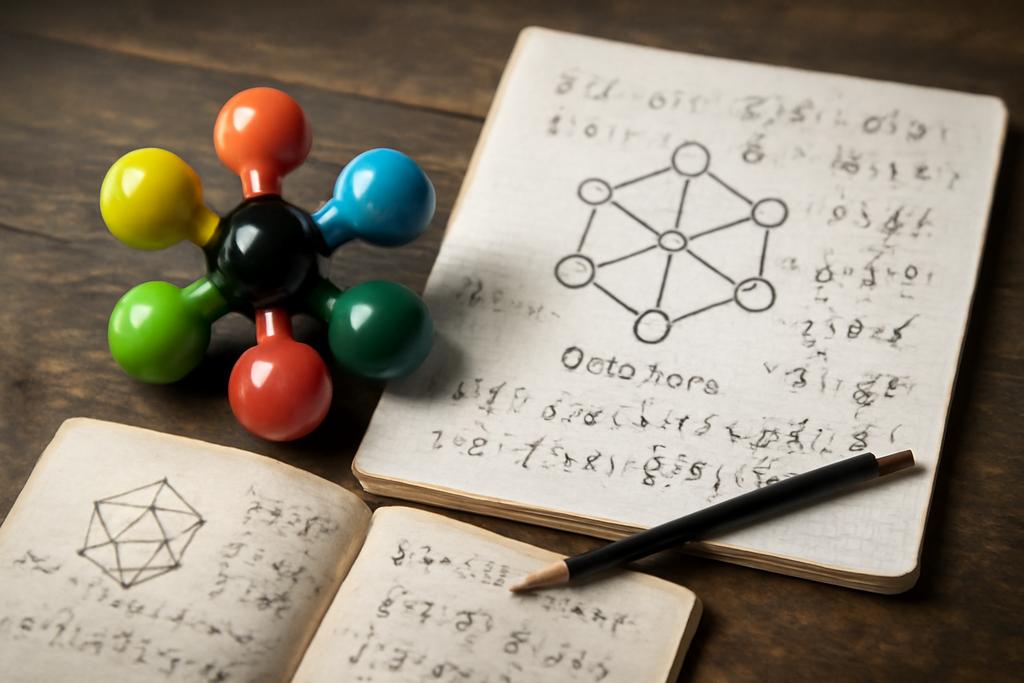Unveiling the Hidden Geometries of Exceptional Symmetries
In the vast landscape of mathematics, certain structures stand out like rare gems—exceptional Lie algebras are among these. These intricate algebraic objects encode symmetries so profound that they underpin parts of theoretical physics, geometry, and beyond. Yet, their complexity often makes them elusive to fully grasp or classify.
Recently, a team of mathematicians from the University of Málaga and the University of Cape Town—Francisco Cuenca, Cristina Draper, and Thomas L. Meyer—have charted a remarkable new territory within these exceptional symmetries. Their work, centered on the mysterious octonions and a subtle operation called graded contraction, has revealed a staggering 860 distinct algebraic worlds, each a unique variation on these exceptional symmetries.
Octonions: The Eight-Dimensional Alchemists
To appreciate this breakthrough, we must first meet the octonions. Imagine numbers that extend beyond the familiar real and complex numbers, beyond even quaternions, into an eight-dimensional realm. Octonions are these exotic creatures—non-associative, meaning the order in which you group them matters, unlike ordinary multiplication.
Despite their quirks, octonions are the secret sauce behind the construction of exceptional Lie algebras—those rare symmetry groups that don’t fit into the classical families. Using a construction devised by Jacques Tits in the 1960s, one can build all exceptional Lie algebras (except the smallest one, called g2) from octonions combined with certain Jordan algebras, themselves algebraic structures inspired by quantum mechanics.
Graded Contractions: Morphing Symmetries with a Twist
Lie algebras can be thought of as the DNA of continuous symmetries. One way to study their diversity is through gradings—decompositions that assign parts of the algebra to elements of a group, like coloring a complex mosaic according to a hidden pattern.
Graded contractions then act like a controlled deformation of these symmetries, tweaking the algebra’s multiplication rules in a way that respects the grading. This process can produce new Lie algebras from old ones, revealing a rich web of relationships and hidden structures.
In physics, contractions famously connect different symmetry groups underlying distinct physical theories, such as linking relativistic and classical mechanics. Here, the authors explore a specific kind of grading by the group Z3×Z3 (think of a two-dimensional grid with three positions in each direction) on exceptional Lie algebras derived from octonions.
Generalised Nice Sets: The Combinatorial Rosetta Stone
Classifying all possible graded contractions is a daunting combinatorial puzzle. The key insight from this research is the introduction of a new combinatorial object called a generalised nice set. These sets encode which pairs of grading elements interact nontrivially under contraction, serving as a blueprint for the resulting algebra’s structure.
Previously, a simpler notion called a “nice set” helped classify contractions for smaller algebras like g2, but the exceptional algebras of higher dimension demanded this more sophisticated tool. The authors proved that every graded contraction’s support—the set of active pairs—is precisely a generalised nice set, and conversely, every such set corresponds to a valid contraction.
From 52 to 248 Dimensions: A Symphony of 860 Algebras
By systematically analyzing these generalised nice sets, the team discovered exactly 245 distinct classes up to symmetry transformations. When applied to the four exceptional Lie algebras built from octonions and their subalgebras (dimensions 52, 78, 133, and 248), this yields a total of 860 non-isomorphic Lie algebras—215 for each dimension.
These algebras exhibit a dazzling variety of properties: some are nilpotent (their symmetries “fade away” after repeated commutations), others are solvable, and many possess rich semisimple cores known as Levi factors. Intriguingly, the Levi factors correspond exactly to the algebras appearing in the famed Freudenthal Magic Square, a celebrated classification linking exceptional Lie algebras to composition algebras.
Why This Matters: A New Lens on Symmetry and Structure
This classification is more than a mathematical curiosity. Exceptional Lie algebras appear in string theory, particle physics, and geometry. Understanding their graded contractions opens pathways to new symmetry models, potentially illuminating unknown physical phenomena or novel geometric structures.
Moreover, the approach is elegant and surprisingly hands-on. The authors achieved this comprehensive classification without relying on computational brute force—a testament to the power of combining algebraic insight with combinatorial ingenuity.
Looking Ahead: The Frontier of Algebraic Landscapes
The work leaves open tantalizing questions. Are there even more exotic contractions lurking beyond these generalised nice sets? Could these new algebras find applications in physics or inform the geometry of higher-dimensional spaces? The authors suggest that while their classification is exhaustive for the graded contractions considered, exploring other gradings or relaxing conditions might reveal further hidden structures.
In the grand quest to understand symmetry, this research adds a rich chapter, showing how the octonions—those enigmatic eight-dimensional numbers—continue to inspire new mathematical worlds. It’s a vivid reminder that even in the abstract realm of algebra, there are vast unexplored universes waiting to be discovered.
Reference: Francisco Cuenca, Cristina Draper, and Thomas L. Meyer, “Graded Contractions of the Z3×Z3-Gradings on the Exceptional Lie Algebras Coming from Octonions,” University of Málaga and University of Cape Town, 2025.










